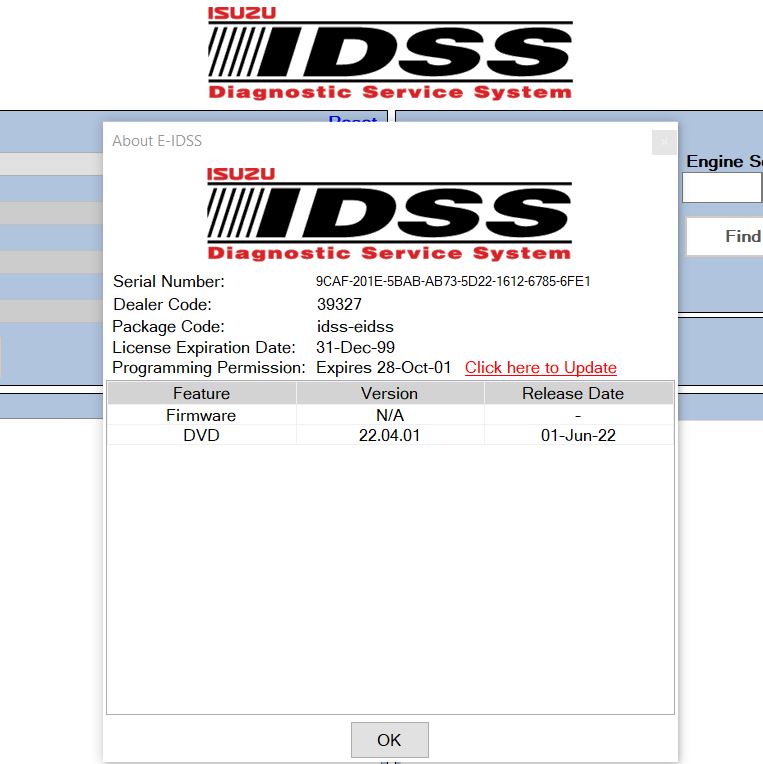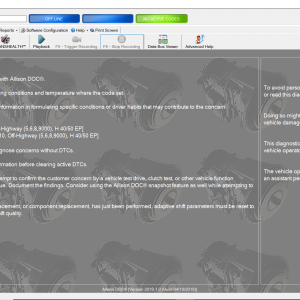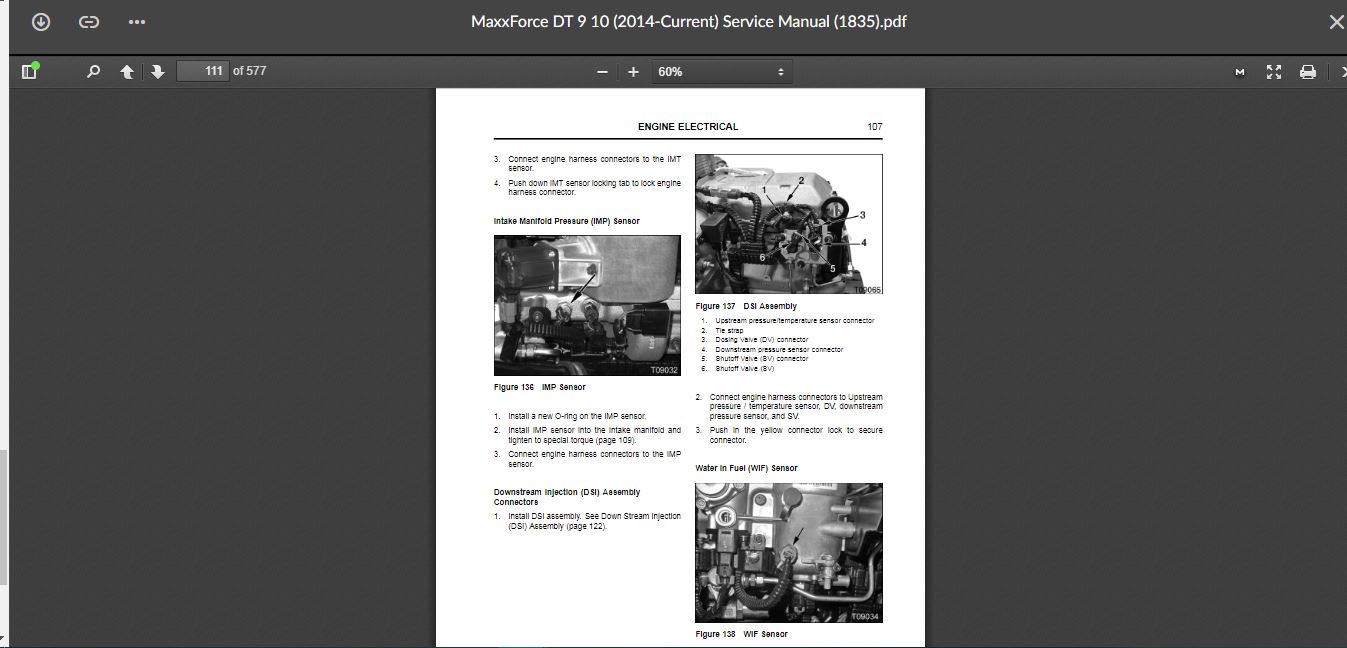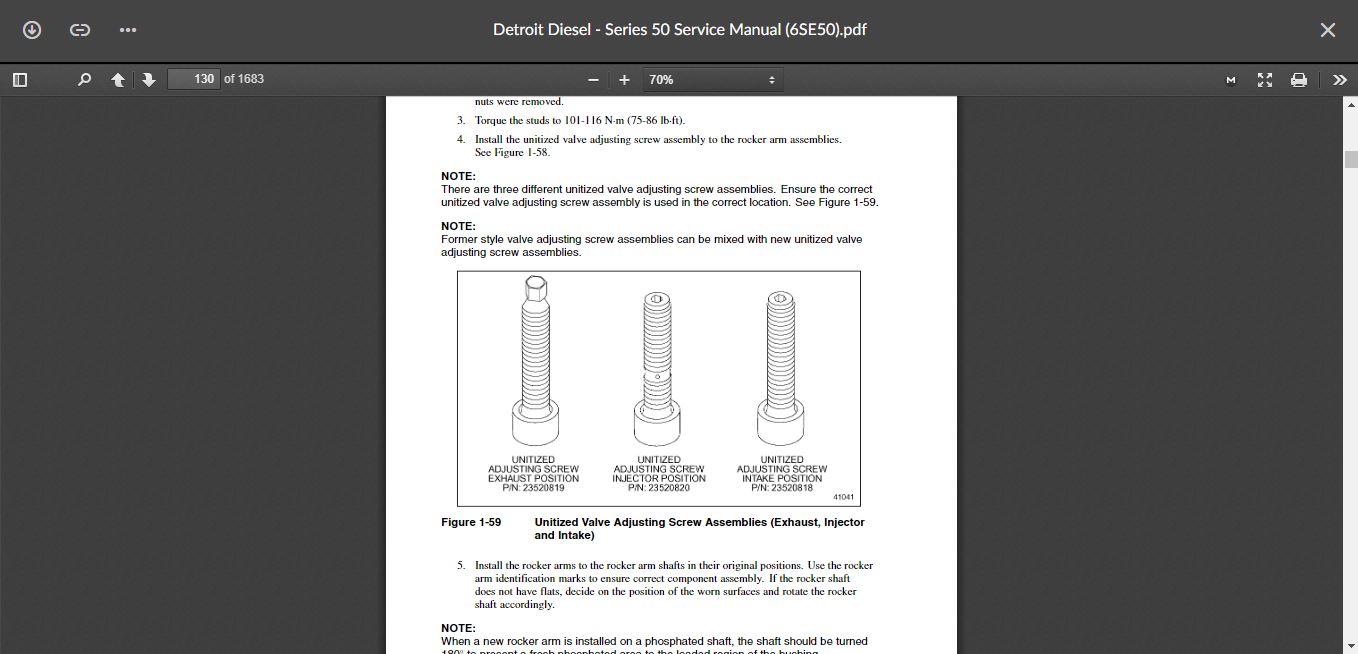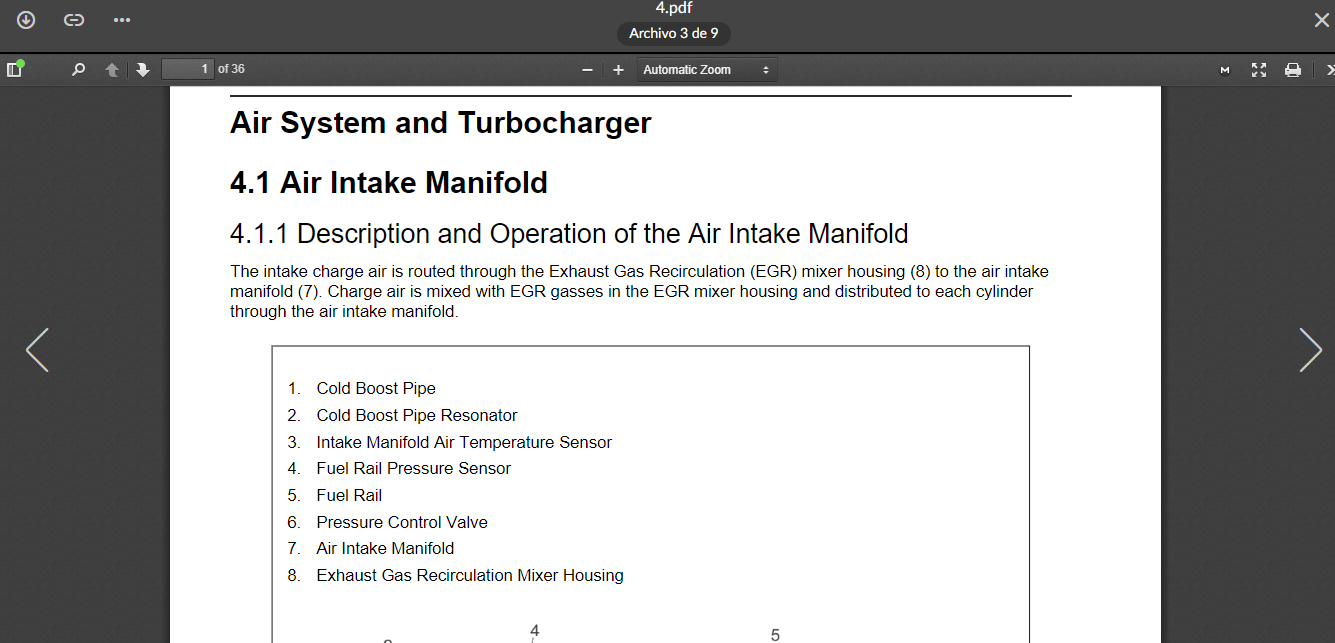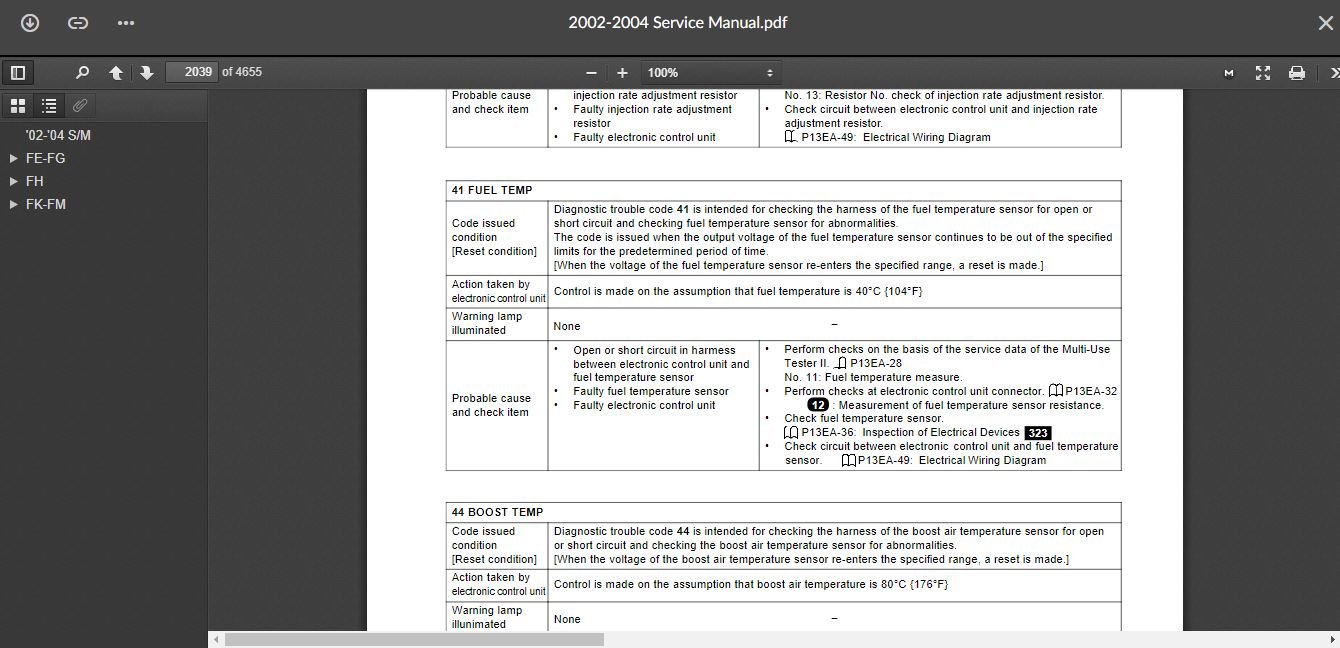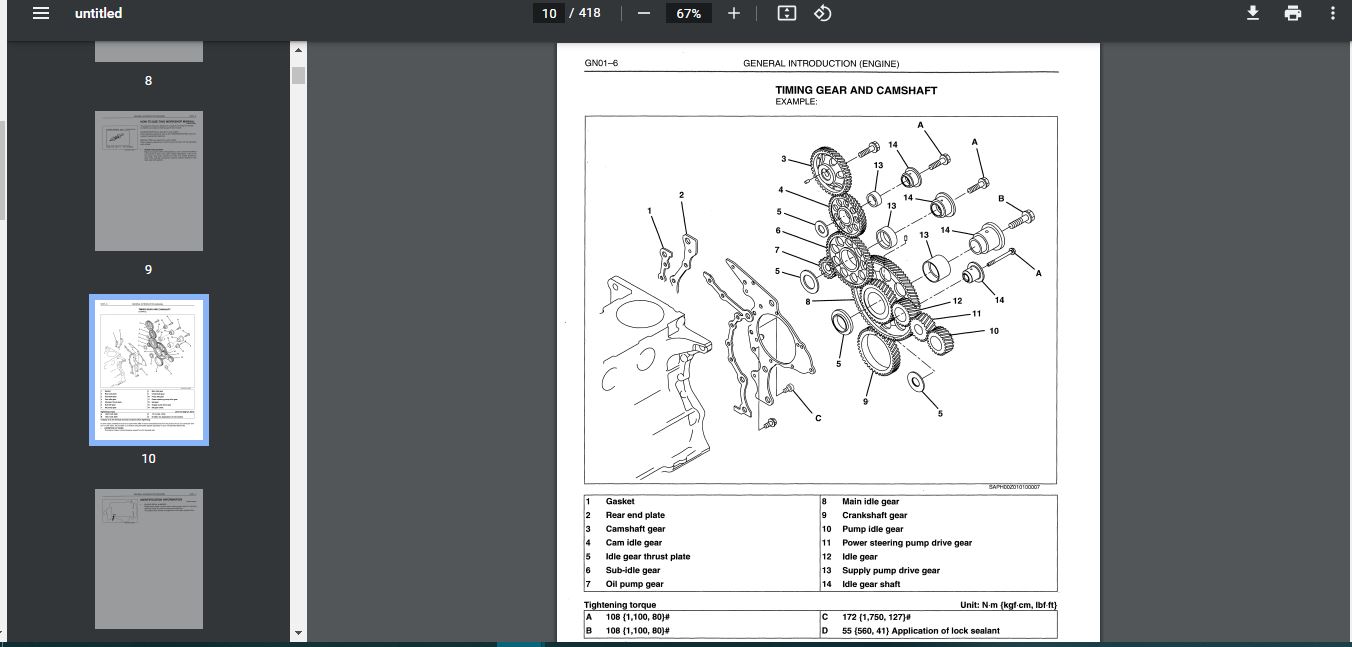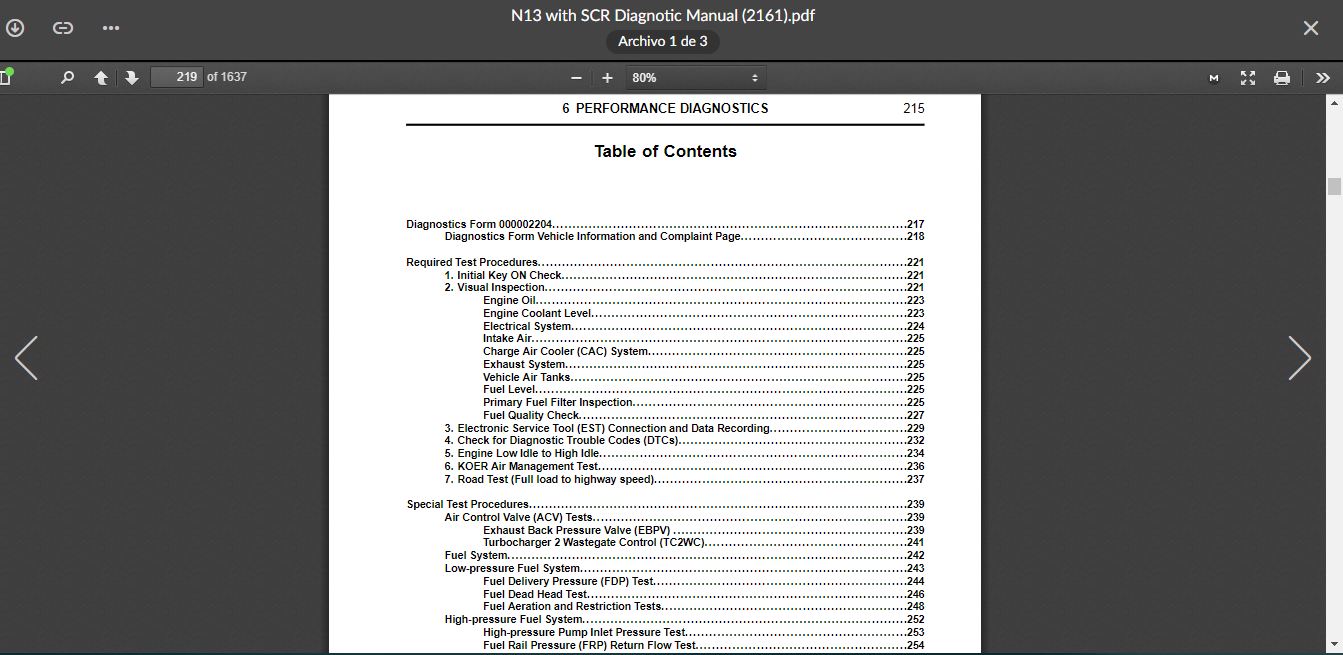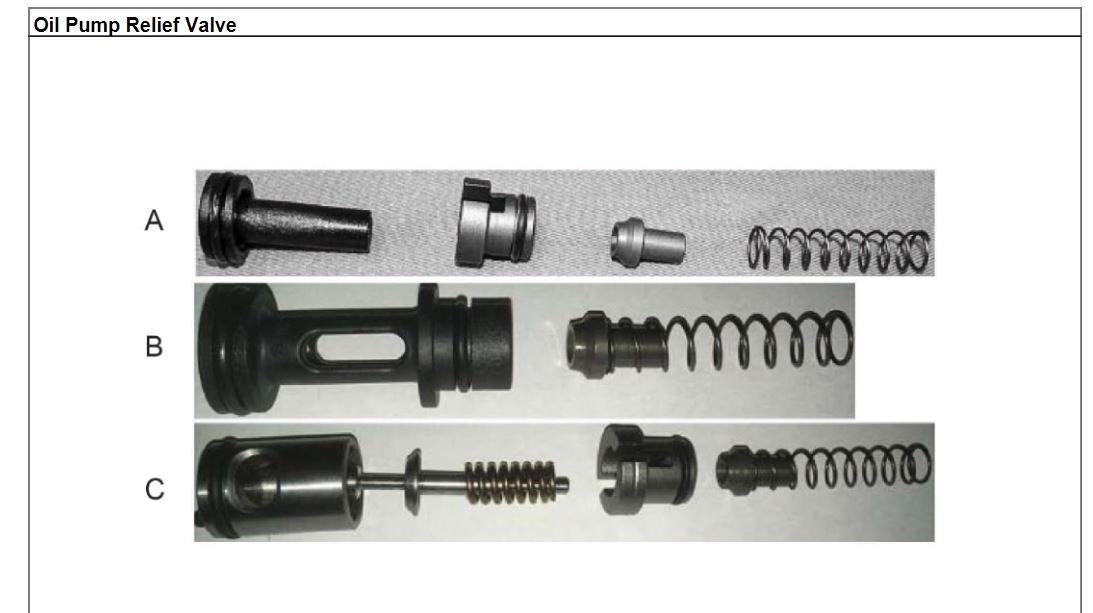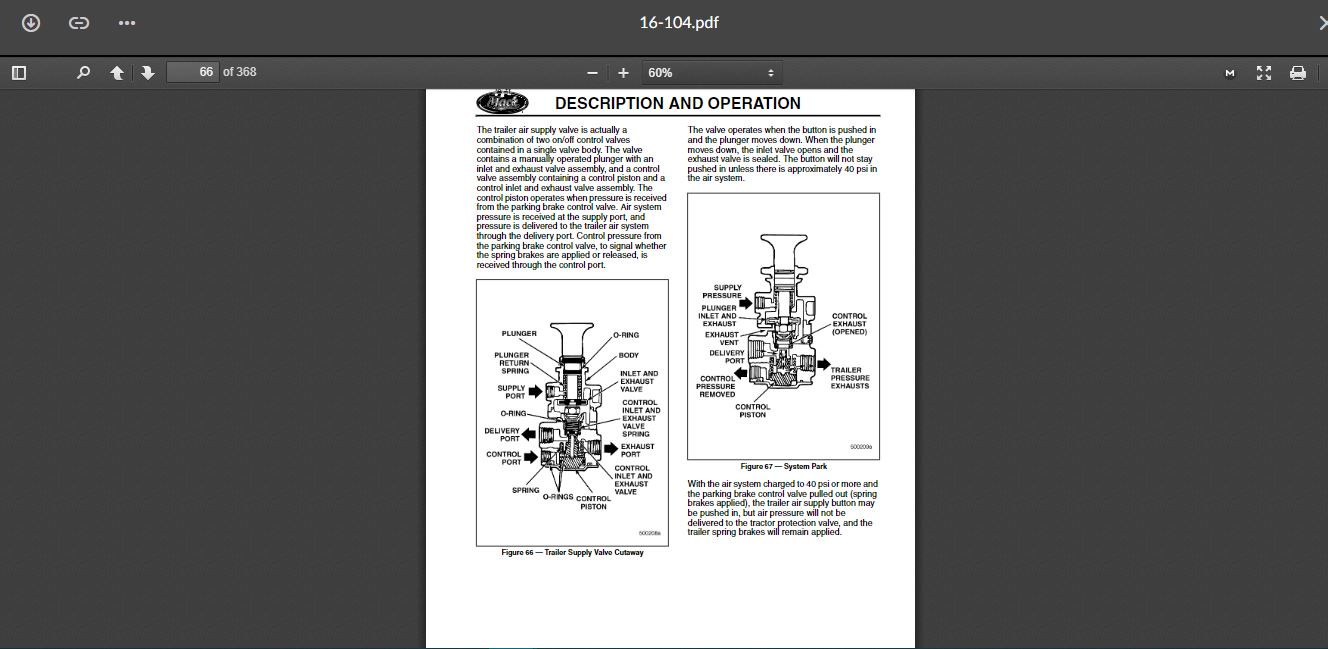PACCAR PX-9 CM2350 (2013-17) Fault Code:1713 PID: SPN:3363 FMI:16 Aftertreatment Diesel Exhaust Fluid Tank Heater – Data Valid But Above Normal Operating Range – Moderately Severe Level
Reason:
Aftertreatment Diesel Exhaust Fluid Tank Heater – Data Valid But Above Normal Operating Range – Moderately Severe Level. The diesel exhaust fluid tank heater is continuously in the ON position.
Effect:
None on performance
Circuit Description:
The aftertreatment diesel exhaust fluid tank heater keeps the diesel exhaust fluid from freezing in the diesel exhaust fluid tank. The tank heater consists of an electrically powered tank heater control valve which controls the flow of engine coolant to a heating coil inside the diesel exhaust fluid tank. The tank heater control valve opens to allow coolant to flow to the heating coil when heating is commanded, and closes when heating is no longer required.
Component Location:
The diesel exhaust fluid tank heater control valve is located near the diesel exhaust fluid tank. Specific location will vary depending on the vehicle OEM. The tank heating coil is internal to the diesel exhaust fluid tank.
Conditions for Running the Diagnostics:
This diagnostic runs continuously when diesel exhaust fluid tank heating is NOT being commanded.
Conditions for Setting the Fault Codes:
The Engine Control Module (ECM) detected the DEF tank temperature was greater than 75°C [170°F] indicating the aftertreatment diesel exhaust fluid tank heater was in the ON position when the ECM was commanding the heater to be in the OFF position.
Action Taken When the Fault Code is Active:
1) The ECM illuminates the amber CHECK ENGINE lamp and/or Malfunction Indicator Lamp (MIL) after the diagnostic fails on two consecutive trips.
2) Diesel exhaust fluid injection into the aftertreatment system is disabled.
3) Engine torque will be reduced if the engine is operated for an extended period of time with this fault active.
Conditions for Clearing the Fault Code:
1) To validate the repair, perform a key cycle, start the engine and let it idle for 1 minute.
2) The fault code status displayed by INSITE™ electronic service tool will change to INACTIVE immediately after the diagnostic runs and passes.
3) The ECM will turn off the amber CHECK ENGINE lamp immediately after the diagnostic runs and passes.
4) For On-Board Diagnostics (OBD) engines, the ECM will extinguish the Malfunction Indicator Lamp (MIL) after three consecutive trips where the diagnostic runs and passes.
5) The Reset All Faults command in INSITE™ electronic service tool can be used to clear active and inactive faults, as well as extinguish the MIL for OBD applications.
Shop Talk:
Before troubleshooting this fault code, make sure the vehicle is not equipped with an auxiliary heating device for the diesel exhaust fluid tank. Such a device can result in overheating the diesel exhaust fluid in the tank.
This fault code may be inactive when the vehicle is brought in for service. Even if inactive, follow the troubleshooting tree completely.
Reason: If there is a problem with the diesel exhaust fluid (DEF) tank heater control valve, the valve is stuck open, there is coolant leaking past the valve seat, or the valve is incorrectly installed, it can take long periods of operation at high load before the tank temperature gradually increases to the fault code threshold value of 77°C [170°F]. As soon as the temperature drops below 75°C [167°F] due to a stopped engine, overnight parking, reduced coolant temperature, and so forth, the fault code will go inactive while the root cause of the issue is still present.
Reference the appropriate OEM wiring diagram when troubleshooting circuits that utilize wiring supplied by the OEM.
For intermittent power supply and datalink communication issues with Aftertreatment Components, it is highly recommended that the OEM Power Distribution Center fuses and relays be thoroughly checked for loose, missing or intermittent connections.
Possible Causes:
1) Aftertreatment diesel exhaust fluid tank heater control valve installed incorrectly, reversed relative to coolant flow direction.
2) Malfunctioning aftertreatment diesel exhaust fluid tank heater control valve – stuck open or leakage past the valve seat.
Related
-
Volvo Impact 2021 Trucks & Buses 06.2021 DVD 9116 Spare Parts Catalog
Trucks software $55.00Rated 0 out of 5 -
10 IN 1 FOR CAT SIS Caterpillar 2021 Full Service Dealer INCLUDING CAT 2019 C
CAT $110.00Rated 0 out of 5 -
JOHN DEERE SERVICE ADVISOR 5.3.225 DATABASE AG + CF ENGLISH 2023
John Deere $250.00Rated 0 out of 5 -
Navistar international OnCommand service information 2018 software trucks
Navistar $50.00Rated 0 out of 5 -
CAT CDVR PC Software – Caterpillar Digital Voltage Regulator (CDVR) WINDOWS 10
CAT $45.00Rated 0 out of 5
Related products
-
Allison 1000 & 2000 Gen 4 Fault Codes: U1064 J1850 (Class 2) TBC Controller State of Health Failure
1000 & 2000 Gen 4 $50.00Rated 0 out of 5 -
Allison 1000 & 2000 Gen 4 Fault Codes: P0875 Transmission Reverse Pressure Switch Circuit Malfunction
1000 & 2000 Gen 4 $50.00Rated 0 out of 5 -
Allison 1000 & 2000 Gen 4 Fault Codes: P0876 Transmission Reverse Pressure Switch Circuit Stuck Open
1000 & 2000 Gen 4 $50.00Rated 0 out of 5 -
Allison 1000 & 2000 Gen 4 Fault Codes: U2104 CAN Bus Reset Counter Overrun
1000 & 2000 Gen 4 $50.00Rated 0 out of 5 -
Allison 1000 & 2000 Gen 4 Fault Codes: U0032 J1850 (Class 2) Serial Data Communication Link High
1000 & 2000 Gen 4 $50.00Rated 0 out of 5 -
Allison 1000 & 2000 Gen 4 Fault Codes: P1892 Throttle Position Sensor Pulse Width Modulation (PWM) Signal High Input
1000 & 2000 Gen 4 $50.00Rated 0 out of 5 -
Allison 1000 & 2000 Gen 4 Fault Codes: U1041 J1850 (Class 2) ABS Controller State of Health Failure
1000 & 2000 Gen 4 $50.00Rated 0 out of 5 -
Allison 1000 & 2000 Gen 4 Fault Codes: P0873 Transmission Pressure Switch Solenoid E Circuit High
1000 & 2000 Gen 4 $50.00Rated 0 out of 5 -
Allison 1000 & 2000 Gen 4 Fault Codes: U1000 Class 2 Loss of Serial Data Communication
1000 & 2000 Gen 4 $50.00Rated 0 out of 5 -
Allison 1000 & 2000 Gen 4 Fault Codes: P0123 Pedal Position Sensor Circuit High Voltage
1000 & 2000 Gen 4 $50.00Rated 0 out of 5 -
Allison 1000 & 2000 Gen 4 Fault Codes: U0100 CAN Bus ECM Error
1000 & 2000 Gen 4 $50.00Rated 0 out of 5 -
Allison 1000 & 2000 Gen 4 Fault Codes: U0031 J1850 (Class 2) Serial Data Communication Link Low
1000 & 2000 Gen 4 $50.00Rated 0 out of 5 -
Allison 1000 & 2000 Gen 4 Fault Codes: P1779 Engine Torque Delivered To TCM Signal
1000 & 2000 Gen 4 $50.00Rated 0 out of 5 -
Allison 1000 & 2000 Gen 4 Fault Codes: U1016 Class 2 J1850 (Class 2) Powertrain Controller State of Health Failure
1000 & 2000 Gen 4 $50.00Rated 0 out of 5
-
SERVICE MANUAL Eaton Fuller® HD FR/FRO TransmissionsTRSM2400April 2013
TRUCK MANUALSRated 0 out of 5 -
SERVICE MANUAL International Engines MaxxForce DT 9 10 (2014 & Newer)
INTERNATIONAL ENGINES $17.00Rated 0 out of 5


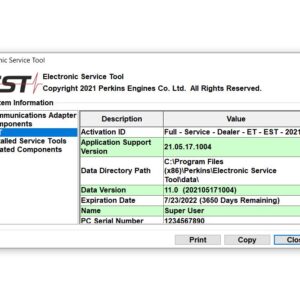

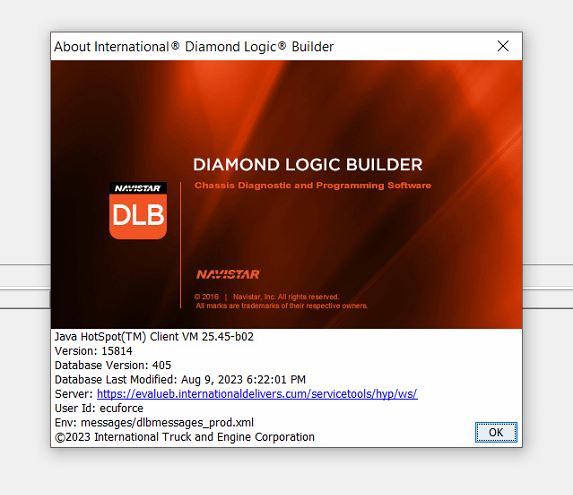



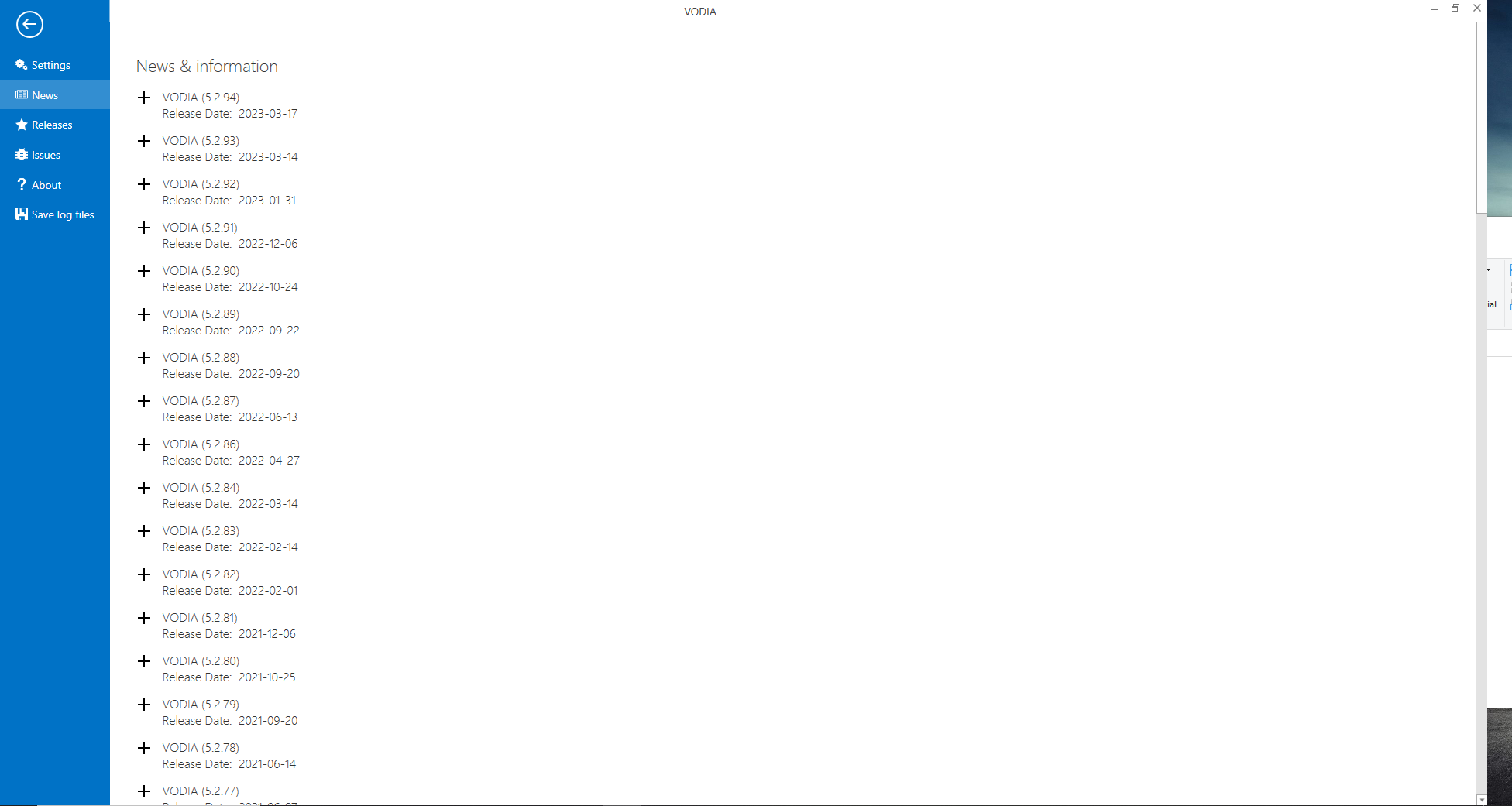

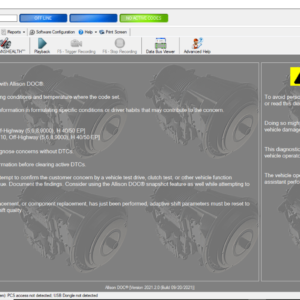



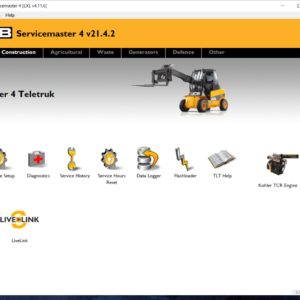

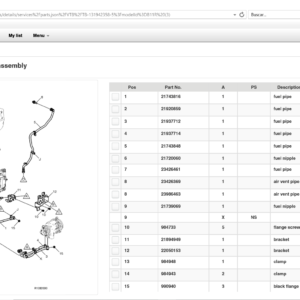

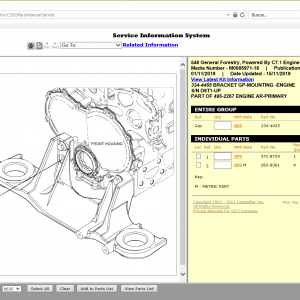

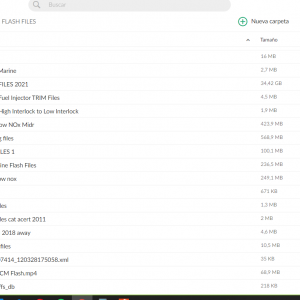



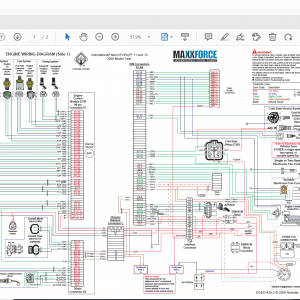

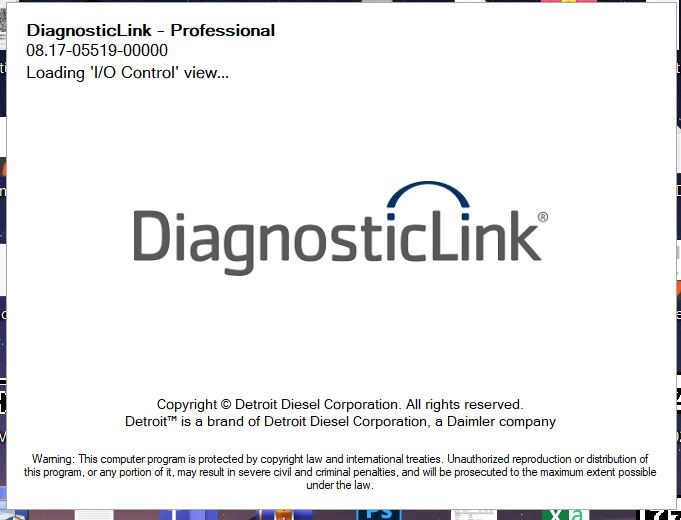
![DOOSAN DMS-5 3.1.3 [2023.11] diagnostic software](https://i0.wp.com/www.ecuforcetruck.com/wp-content/uploads/2023/11/1.png?resize=300%2C300&ssl=1)
![DOOSAN DMS-5 3.1.3 [2023.11] diagnostic software](https://www.ecuforcetruck.com/wp-content/uploads/2023/11/Captura-1.png)




